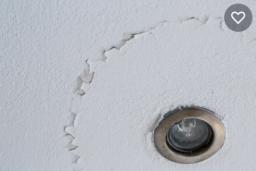Dry Walling

Dry Walling: the perfect solution for ceilings and walls
A Drywall is used to construct walls and ceilings and has become a popular material now used in most homes. Drywall is also known as wallboard, plasterboard or gypsum board and takes the form of panels of gypsum plaster pressed between thick sheets of fiberglass matting or heavyweight paper that are called facers and backers. Additives that prevent mildew, condensation or flammability can be induced in the gypsum plaster layer.
A variety of drywall types are available to homeowners wishing to add to their homes. For example, drywall is available in moisture-resistant panels that are infused with waterproofing materials. This is especially useful if the drywall is being used in a room prone to excess amounts of water or steam, such as a bathroom or scullery.
Fire-resistant drywall is another popular drywall option that has extra fireproofing capabilities. It is suitable for high risk areas such as home-based workshops, kitchens or garages.
Soundproof drywall has additional sound-insulating qualities that are useful for rooms such as bedrooms, nurseries or studies where undisturbed quiet is necessary
Using drywall instead of traditional walling options, such as plaster, certainly has its benefits. One being that drywall is as durable as plaster, but is also quick and easy to repair. The repair process for drywall is also cheaper than that of plaster, especially for smaller cracks or chips.
When improving or building one’s home, being energy efficient is also a key concern. Drywall is a good option if one wants to lower one’s electricity expenditure because its insulation capabilities allow it to keep temperatures inside a home stable during both winter and summer seasons. This lowers one’s reliance on heaters in winter, or fans and airconditioners in summer. In addition to its energy efficiency, drywall is also recyclable. If one is removing or renovating a section of one’s home, drywall panels that are no longer needed can be relocated to complete other buildings, or the drywall panels themselves can be broken down into their constituent parts and be repurposed to make up other products.
